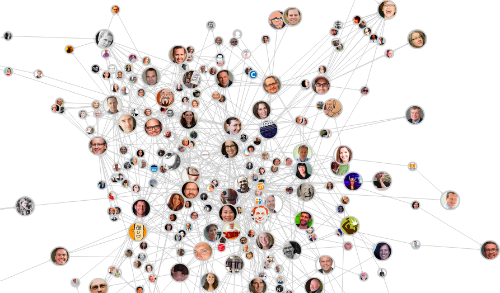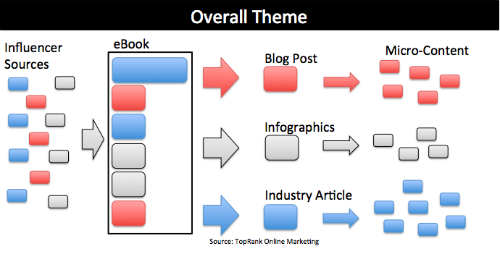
Make no mistake, discovery of content through search engines is more important than ever. But the practice of optimizing content for search visibility has changed substantially.
As search engines look for signals of credibility amongst content and links, humans do the same thing. In the way that links alone used to drive the search visibility of a web page up, endorsements and mentions from industry influencers can still boost the visibility of a brand. As a result, the trend towards advocate and influencer marketing is on the rise.
While SEO and influencer content might seem more meatball sundae than PBJ, I assure you, the combination can be whatever you want it to be, because it’s content. Understanding demand for topics reconciled with the brand’s ambitions around a topic, search optimization insights applied to an influencer content program can boost both the quantity and the quality of attraction.
We have to start with some assumptions though. This is not about technical SEO, markup, schema, page speed, and so forth. In this post I’ll share 5 tips focused specifically on two essential characteristics of content that help people and search engines understand and filter information that’s credible, useful and actionable: Keywords in content and external citations of that content.

1. Campaign Keyword Alignment – First things first: Start with an understanding of what singular or at least focused topics best represent the essence of the influencer content campaign. Ideally the target keyword / topic is used in the title of the content object. Here are some examples we’ve used for ourselves in the past:
- 29 Secrets About Content Marketing
- Building a Content Marketing Strategy
- The Future of B2B Marketing
- Digital Marketing Trends
- 25 Women Who Rock Social Media
You get the idea.
But it’s ok if you don’t have the explicit keyword phrase in the title of your project. Just be sure it is mapped when making references internally and from external sites and used in a sub-heading. For example, “In our latest report on predictive analytics (linked to “Prospect Predictions – How to Find Your Best Customers Before They Find You”. You can also add a subheading as a keyword qualifier like: Riding the Waves of Social Medial – 38 Social Media Marketing Tips from the Pros.
The takeaway isn’t so much the specific naming of your content assets (yet) but that you focus on something specific – whether it’s a theme or a particular thing that is actively being searched for. Of course the way you find out the demand of the theme, topic or keyword is to use a keyword research tool like Google Keyword Planner, SEMRush, Ubersuggest or Keyword.io.
Some social media monitoring tools will provide word clouds and word use by popularity as well, so you can anticipate demand of a topic in social conversations. Sysomos is a good option for that.
Based on this research into what people are actually actively seeking out and talking about online, you can make more informed choices about the titling and naming of your influencer content assets.

2. Influencer Domain Expertise and Network Affinity – Identify, qualify and recruit influencers that are aligned in their published expertise with the topic. Take into account the topical focus of their community as well.
There are a host of influencer discovery tools like these that can provide insight into the topics most aligned with a particular influencer. It usually works the other way around with these tools – you start with a keyword to find out who the influencers are for that particular keyword. Some tools like Traackr allow you to import lists of influencers you have already qualified.
Either way, consider the relevance of your influencers to the main theme of the content program. Do they talk about the topic? With what frequency and what impact? Do people take action when they post or share on the topic?
This is where niche influencers that inspire a high percentage of action come in very handy.

3. Content Sourcing & Topics – Use target phrases in the actual questions used to collect content from your influencers. This will likely inspire organically optimized answers relevant to your theme. Try to ask questions that will return specific and even tactical answers. These are easier to optimize and to make “Tweet friendly”. Being able to extract a zinger quote from an influencer’s response will be highly valuable for inspiring social sharing. People love quotes, statistics and clever statements.
Then organize content within the finished influencer content piece according to the themes being focused on. In the case of a recent series of 4 eBooks, each was themed according to a specific topic with keywords to help make them easy to find. Content + strategy, + audience, + visual, + ROI. As a package, all content objects are relevant for the overall theme of “content marketing”. Individually, they are relevant for specific sub-topics that are a part of the overall theme.
This same organization can apply to chapters within a white paper or eBook. Or even sections of a modular infographic.
4. Topical Pitching – Create assets that complement the content like an infographic or video and pitch them to topically aligned blogs and publications.
With the overall theme in mind, content assets can be created from the influencer content in different formats that align well with high profile blogs and publications in the industry. A particular blog might be prone to publishing infographics for example, so be sure to create one from your influencer content and share it with them. Another blog might prefer videos, so do a few Google HOAs with the influencers and provide that asset in your pitch.
The objective with topical pitching is the make sure the pitch itself aligns well with the theme you’re focusing on as well as discovering the preferred topics and media formats of the blogs and publications you’re pitching to. BuzzSumo is handy for topic research with specific blogs and Keyhole offers some interesting media identification in relation to topics – i.e. what media are most popular in conjunction with topic “xyz”.
5. Attract Themed Citations – Within the influencer content object itself or in the content assets used for promotion, mention people known for the topic you’re focusing on. Cite 3rd party sources for validation of concepts and it may attract organic inbound links and shares.
When organic content starts to pick up on social channels, apply paid social to amplify. In combination with influencer sharing, a growing organic presence in combination with targeted social ads will attract a momentum of social shares, visits and links to your influencer content.
Of course, none of this works unless the content is relevant, creatively packaged, well-edited and involves highly credible and active influencers.
There you go – 5 ways to inspire themed content and citations for your co-created influencer content project. The operative word here is “inspired” and earned attention. Think beyond the notion of “keywords” for SEO and focus more on topics and themes that represent the interests of your audience. Connect with influencers that are already well known, authoritative and visible for the themes you brand wants to align with. Then create mutual value with those influencers by creating content together.
Optimize that content from planning to promotion and everybody involved will see the returns in the form of more relevant content that people are actually looking for.
Photo: Shutterstock


